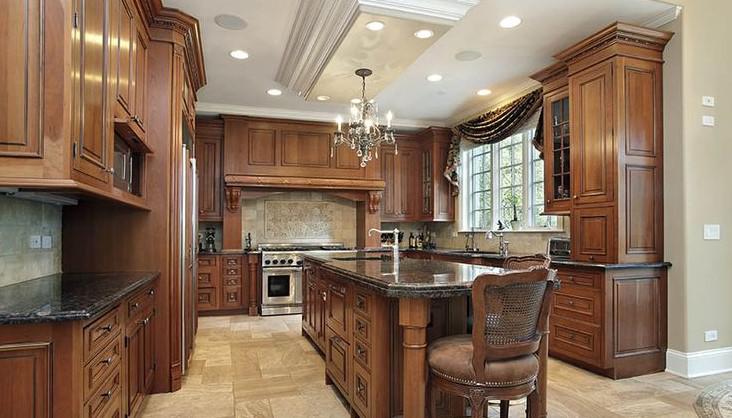
Modern Cabinets vs. Traditional Cabinets: Which Style is Right for You?
When it comes to choosing cabinets for your home, the decision often boils down to selecting between modern and traditional styles. Both options offer unique advantages and can significantly influence the overall aesthetic of your space. Whether you're renovating your kitchen, bathroom, or any other part of your home, understanding the differences between modern and traditional cabinets will help you make an informed choice. Let's dive into the key characteristics, benefits, and considerations of each style.
Modern Cabinets: Modern cabinets are known for their sleek, minimalist design. They often feature clean lines, flat surfaces, and a focus on simplicity. The materials used in modern cabinets include high-gloss finishes, glass, metal, and engineered wood, creating a contemporary look. Colors tend to be neutral, with shades like white, gray, and black being popular, though bold colors are also used for a striking effect. Handleless designs or subtle, integrated handles are common, contributing to the streamlined appearance.
Traditional Cabinets: Traditional cabinets, on the other hand, exude warmth and charm. They are often more ornate, with detailed craftsmanship such as raised panel doors, crown molding, and decorative hardware. Materials like solid wood (oak, cherry, maple) are frequently used, lending a rich, natural feel to the space. Traditional cabinets typically come in warm, earthy tones, although painted finishes in soft colors like cream or sage are also common.
Modern Cabinets: Modern cabinetry is designed with functionality in mind. The emphasis is on maximizing space, often incorporating innovative storage solutions like pull-out drawers, hidden compartments, and adjustable shelving. These cabinets tend to be highly efficient, making the most of every inch of space, which is ideal for smaller kitchens or minimalist homes where clutter-free living is a priority.
Traditional Cabinets: While traditional cabinets may not offer the same level of built-in storage solutions as modern ones, they provide ample space and can be customized to suit your needs. The sturdy construction and use of quality materials ensure durability, making traditional cabinets a long-lasting choice. The design allows for flexibility in storage, often featuring deeper drawers and larger cabinets that can accommodate a variety of kitchen tools and accessories.
Modern Cabinets: Modern cabinets can vary widely in price depending on the materials and customization options. High-end materials like stainless steel, glass, or specialized finishes can drive up costs. However, due to their minimalist design, they can sometimes be less expensive if you opt for simpler, mass-produced options.
Traditional Cabinets: Traditional cabinets are generally more expensive due to the craftsmanship involved and the use of solid wood. Custom features, intricate details, and high-quality finishes can add to the cost. However, their durability and timeless appeal often make them a worthwhile investment, as they can add significant value to your home.
Modern Cabinets: Modern cabinets are versatile and can seamlessly blend into various interior styles, from industrial to Scandinavian. Their neutral colors and minimalist design make them an excellent choice for open-concept homes or spaces where you want the cabinets to blend rather than stand out. They work well in smaller spaces where a clean, uncluttered look is desired.
Traditional Cabinets: Traditional cabinets are ideal for homes with classic or rustic interiors. They add character and warmth, making them a focal point in the kitchen or bathroom. While they might not fit as seamlessly into ultra-modern homes, they can be incorporated into eclectic designs or spaces where a cozy, welcoming atmosphere is desired.
Modern Cabinets: The materials used in modern cabinets are often designed for easy maintenance. High-gloss finishes can be wiped clean with minimal effort, and engineered wood or laminates are resistant to scratches and stains. However, they may not have the same longevity as solid wood, particularly if lower-quality materials are used.
Traditional Cabinets: Traditional cabinets, especially those made from solid wood, require a bit more maintenance to keep them looking their best. Regular polishing and occasional refinishing may be needed to preserve their beauty. However, their robust construction means they can last for decades, aging gracefully and often gaining character over time.
Choosing between modern and traditional cabinets ultimately comes down to your personal preferences, the style of your home, and your functional needs. Modern cabinets offer a sleek, efficient option for those who love contemporary design and minimalism. Traditional cabinets, with their warmth and timeless appeal, are perfect for creating a cozy, inviting space that feels rich and substantial.
If you’re still on the fence, consider a blend of both styles. Transitional designs combine elements of both modern and traditional cabinetry, offering a versatile solution that can adapt to changing tastes and trends.
No matter which style you choose, investing in quality cabinetry will enhance the beauty and functionality of your home for years to come.